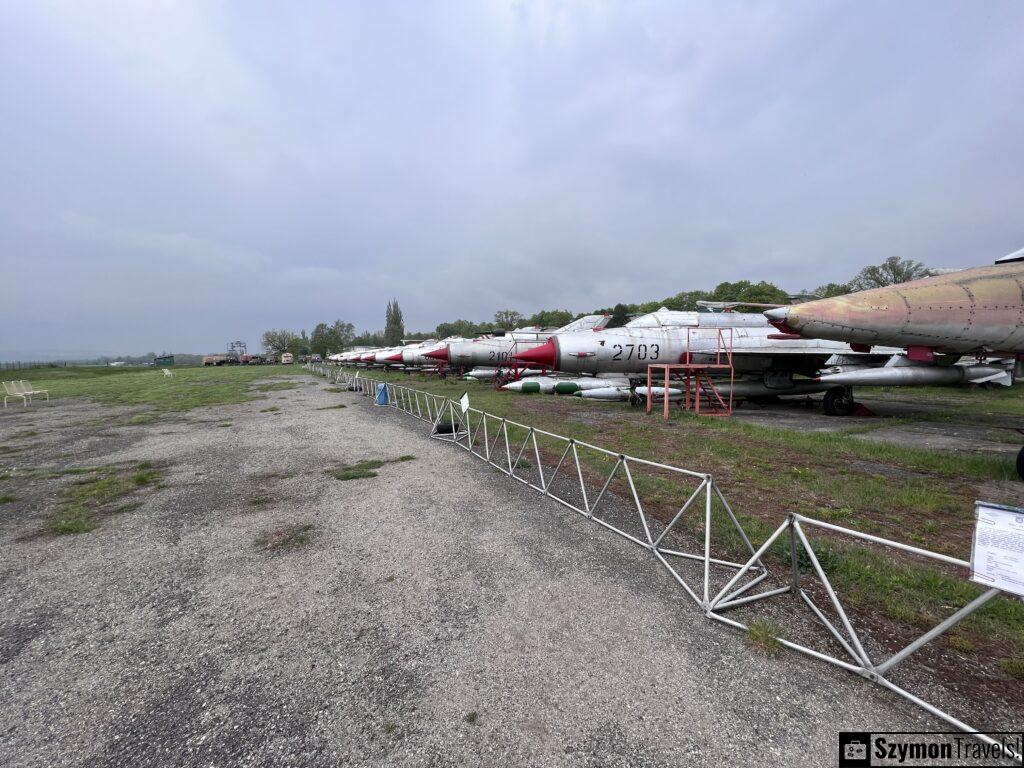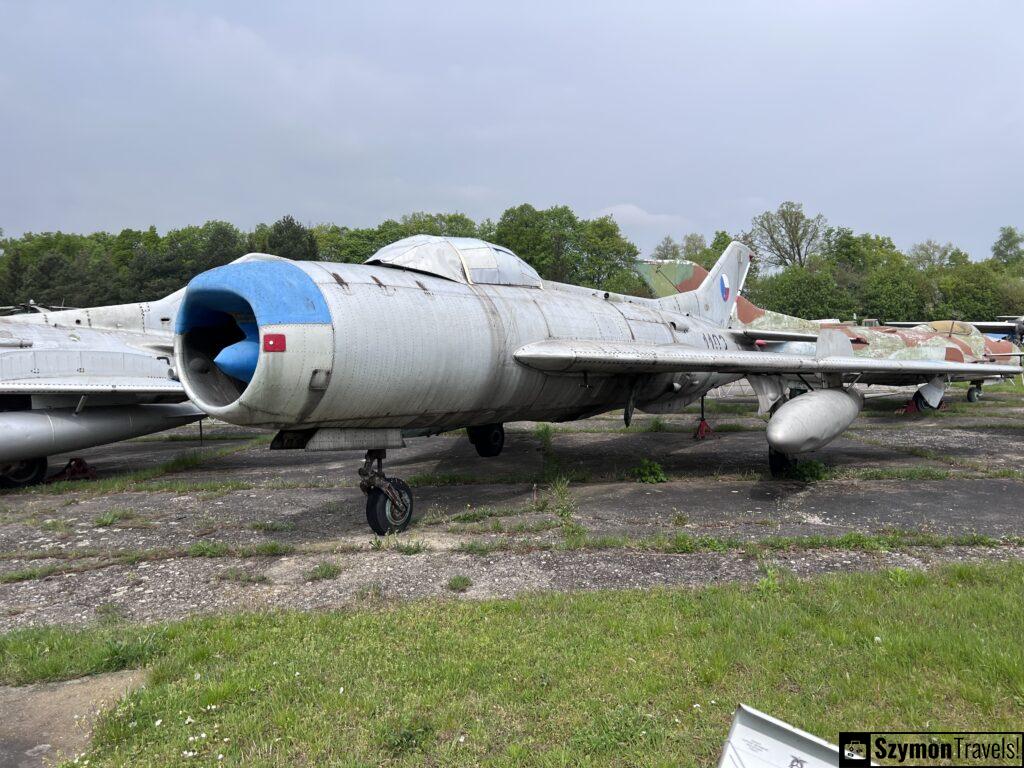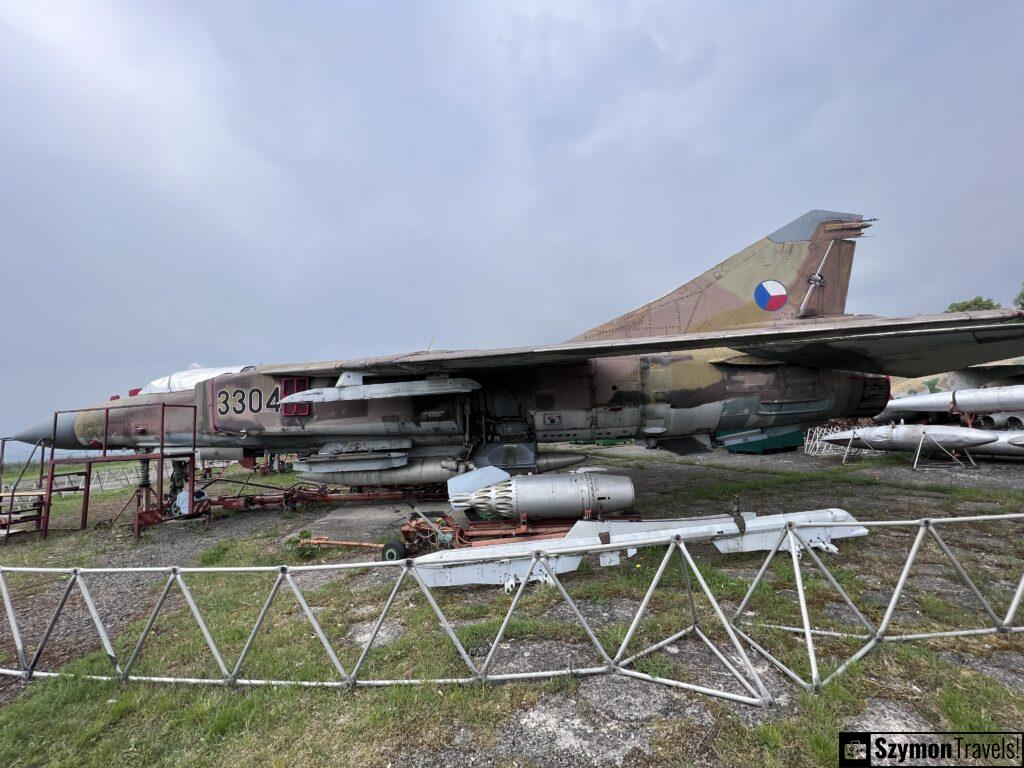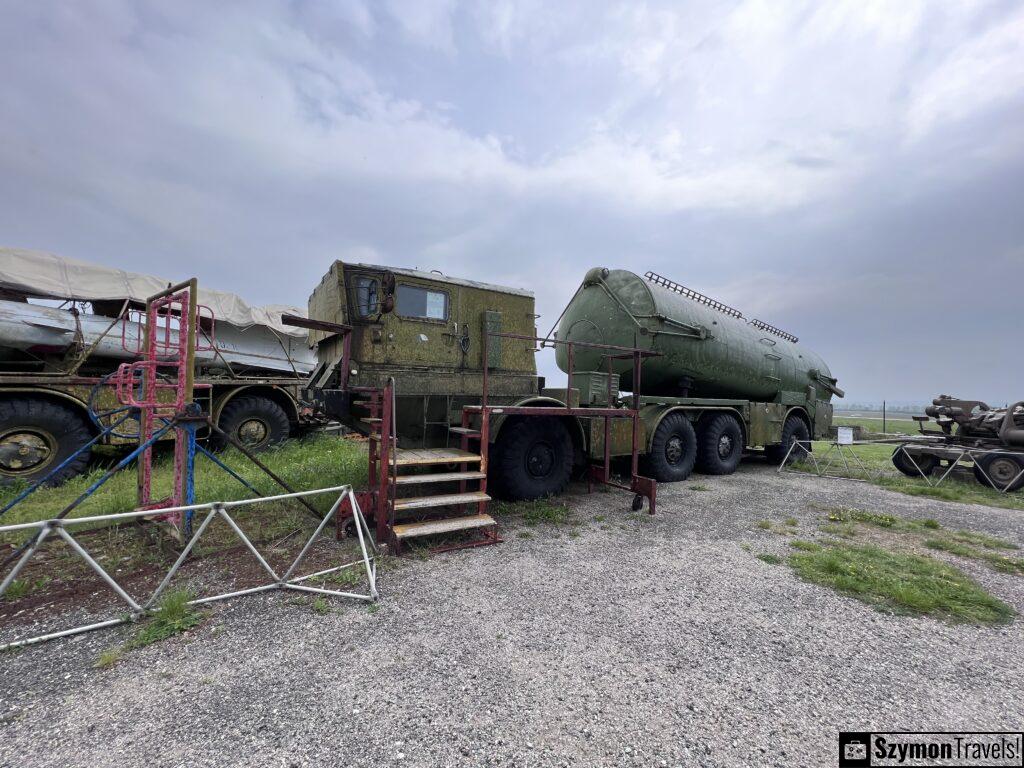Muzeum letecké a pozemní techniky Vyškov, also known as the Air and Ground Museum, is a aviation museum a fascinating museum located in Vyškov, Czech Republic. The museum features a collection of over 100 aircraft, vehicles, and weapons from both military and civilian sectors.
The aviation museum was founded in 1995 and has since become a popular attraction for aviation enthusiasts, history buffs, and families. The exhibits include fighter planes, helicopters, transport aircraft, gliders, and more. One of the most notable aircraft on display is the Aero L-39 Albatros, a Czechoslovakian jet trainer and light attack aircraft that was in service from 1971 to 2014.
Visitors can also see a range of ground vehicles, including tanks, armored cars, and trucks. Some of the vehicles have been restored and are fully operational, allowing visitors to experience them in action.
Rated by Szymon
5.0 out of 5.0 stars




Overall, Muzeum letecké a pozemní techniky Vyškov is a must-visit destination for anyone interested in military aviation and history. With its extensive collection of aircraft and ground vehicles, as well as its interactive exhibits, the museum provides a unique and educational experience for visitors of all ages. It is not far from Brno.
Information for guests
Ticket price: 50 Czech krona
Open for visitors
APRIL MAY JUNE, SEPTEMBER OCTOBER:
SATURDAYS, SUNDAYS AND HOLIDAYS: 10:00 – 16:00
JULY AUGUST:
Wednesday, Thursday,Saturday, Sunday: 10:00 – 16:00
Check the official web site: https://lhs-vyskov.cz
AERO Albatros L-39V

The AERO Albatros L-39V is a Czechoslovakian jet-powered trainer aircraft that was designed and built by Aero Vodochody in the 1960s. The L-39V, which stands for “Vyroba” (production) was the version of the L-39 Albatros designed specifically for the Czechoslovakian Air Force.
The L-39V was designed to be a primary jet trainer aircraft for the Czechoslovakian Air Force, and it entered service in 1972. It was also used by several other air forces around the world, including the Soviet Union and other countries in the former Eastern Bloc, as well as in Africa, Asia, and the Middle East. Today, the L-39V is still in service with several air forces and is also popular as a civilian jet trainer aircraft.
The L-39V is a relatively small aircraft, measuring about 12 meters in length and 4 meters in height. It is powered by a single turbofan engine, which gives it a top speed of around 750 km/h and a range of about 1,000 kilometers. The aircraft is designed to be easy to maintain and has a relatively low operating cost, which has contributed to its popularity as a trainer aircraft.
The L-39V is also known for its agility and maneuverability, making it popular among pilots who want to learn advanced aerial maneuvers. The aircraft is capable of performing a wide range of aerobatic maneuvers, including loops, rolls, and inverted flight.
Overall, the AERO Albatros L-39V is a popular and well-regarded jet trainer aircraft that has served in many air forces around the world. Its versatility, ease of maintenance, and low operating costs have made it a popular choice for both military and civilian pilots who want to train in a jet-powered aircraft.
Mi-8

The Mi-8 is one of the most widely used helicopters in the world, with over 17,000 produced and used by over 80 countries. It is known for its versatility and has been used for a wide range of applications, including transport of troops and cargo, search and rescue operations, firefighting, and even as a gunship.
The Mi-8 has a crew of two or three and can carry up to 24 passengers or 4,500 kg of cargo. It is powered by two turboshaft engines and has a top speed of around 250 km/h and a range of over 600 km.
Over the years, several variants of the Mi-8 have been developed, including the Mi-17, which has a larger cargo capacity and improved engines, and the Mi-171, which has further improvements in avionics and navigation equipment.
The Mi-8 has been involved in many conflicts and has been used by various armed forces around the world. It has also been used in civilian operations, such as transporting supplies to remote areas and supporting humanitarian missions.
Overall, the Mil Mi-8 is a widely used and versatile helicopter that has proven its reliability and durability over several decades of service. Its ability to adapt to various roles and environments has made it a popular choice for military and civilian operators alike.
MiG-19PM “Farmer-E”

The MiG-19PM “Farmer-E” was a supersonic fighter-interceptor aircraft developed by the Soviet Union in the 1950s. It was an improved version of the earlier MiG-19, featuring more powerful engines and upgraded avionics.
The MiG-19PM was designed to be a high-altitude interceptor, capable of intercepting and engaging enemy aircraft at speeds of up to Mach 1.5. It was equipped with two afterburning turbojet engines that produced a total of 11,000 kgf of thrust, allowing the aircraft to climb to altitudes of up to 17,000 meters.
The MiG-19PM had a length of 12.8 meters, a wingspan of 9.6 meters, and a maximum takeoff weight of 10,400 kg. It was armed with three 30mm NR-30 cannons, as well as various air-to-air missiles and rockets.
The “Farmer-E” saw service in several conflicts, including the Vietnam War, where it was used by the North Vietnamese Air Force to engage U.S. aircraft. It was also used by other countries in the former Soviet Bloc, as well as in China and North Korea.
Avia Av-14 RTR

The Avia Av-14 RTR was a Czechoslovakian reconnaissance aircraft developed in the 1950s here at display in aviation museum.The Av-14 was produced by Avia, a Czechoslovakian aircraft manufacturer.
The Av-14 RTR was based on the Avia Av-14 transport aircraft, with modifications made to suit its role as a reconnaissance aircraft. The Av-14 RTR was designed to be used for aerial photography, mapping, and reconnaissance missions. It was equipped with a range of cameras and sensors, including panoramic cameras, oblique cameras, and infra-red sensors.

The Av-14 RTR had a crew of three, including a pilot, navigator, and camera operator. It was powered by two Avia M-332 radial engines and had a maximum speed of 295 km/h and a range of 1,400 km.
The Av-14 RTR served with the Czechoslovakian Air Force in the 1950s and 1960s, before being replaced by more advanced reconnaissance aircraft. Only a few Av-14 RTR aircraft were produced, and none are known to be in service today.
MiG-23 BN “Flogger-F”

The MiG-23 BN “Flogger-F” was a ground-attack variant of the Soviet Union’s MiG-23 fighter aircraft. It was developed in the 1970s and was designed to perform close air support and interdiction missions.
The MiG-23 BN was equipped with a more powerful engine than its predecessors, giving it a maximum speed of Mach 2.35 at high altitude. It had a range of up to 2,820 km and could carry a variety of air-to-ground missiles, bombs, and rockets.
The aircraft had a length of 17.3 meters, a wingspan of 13.97 meters, and a maximum takeoff weight of 20,000 kg. It was armed with a GSh-23L 23mm cannon and could carry up to 4,000 kg of weapons on its six external hardpoints.
The MiG-23 BN saw combat in several conflicts, including the Iran-Iraq War and the Soviet-Afghan War. It was also exported to several countries, including Iraq, Syria, and Libya.
However, the MiG-23 BN was plagued with maintenance issues and suffered from a high accident rate. It was eventually replaced by more modern and capable ground-attack aircraft such as the Su-25 and Su-24 in Soviet and Russian service.
The Z-37A Čmelák “Bumble-bee”

The Z-37A Čmelák is a Czechoslovakian agricultural aircraft developed in the 1960s by Zlín Aircraft. It is a single-engine, high-wing monoplane with fixed landing gear and an enclosed cockpit for the pilot and a second seat for the observer or mechanic.
The Čmelák was designed to be a versatile and reliable aircraft capable of carrying out a variety of agricultural tasks, such as crop dusting, seeding, fertilizing, and spraying. It is known for its exceptional stability, maneuverability, and low stall speed, which make it well-suited for low-level flying and precise maneuvering.
The Z-37A is powered by a 6-cylinder, air-cooled, carbureted engine producing 150 horsepower. It has a maximum speed of 200 km/h and a range of up to 600 km. The aircraft has a payload capacity of up to 850 kg, including a 500-liter tank for chemicals or fertilizers.
The Z-37A has been exported to many countries around the world and has become a popular agricultural aircraft. In addition to its agricultural uses, the Čmelák has also been used for other applications, such as aerial photography, surveying, and environmental monitoring.
The Z-37A Čmelák is highly regarded for its reliability and versatility, and many units remain in active service to this day. Its success has led to the development of other versions of the Čmelák, including the Z-37T for training and the Z-37 Čmelák AE for aerial photography and mapping.
MiG-23ML at aviation museum

You can find at this aviation museum a MiG-23ML wich is a variant of the Soviet Union’s MiG-23 fighter aircraft that was developed in the 1970s. It was an improved version of the earlier MiG-23S and featured a number of upgrades to its avionics, weapons systems, and engines.
The MiG-23ML was equipped with a Tumansky R-29 turbojet engine, which provided it with a maximum speed of Mach 2.35 at high altitude. It had a combat range of 1,300 km and was armed with a GSh-23L 23mm cannon and a variety of air-to-air missiles, including the R-60, R-13M, and R-23.
The aircraft had a length of 16.7 meters, a wingspan of 13.97 meters, and a maximum takeoff weight of 20,000 kg. It was equipped with a modernized cockpit, which featured improved displays, controls, and weapons delivery systems.
The MiG-23ML was a highly maneuverable fighter aircraft, capable of performing high-G turns and tight dogfighting maneuvers. It was also equipped with a radar warning receiver and chaff/flare dispensers to improve its survivability in combat.
The MiG-23ML saw service with several countries, including the Soviet Union, Iraq, Libya, and Syria. It was used in several conflicts, including the Iran-Iraq War and the Gulf War, and was considered a capable fighter aircraft.
However, the MiG-23ML had a relatively short service life, and it was gradually replaced by more modern and capable aircraft such as the MiG-29 and Su-27. Nonetheless, it remains an important part of the history of Soviet and Russian fighter aviation.
MiG-21 in line at aviation museum

The MiG-21 is a Soviet fighter aircraft here at display in aviation museum, that was first introduced into service in 1959. It was one of the most widely produced jet fighters in history, with over 11,000 units built and served in over 60 countries.
The MiG-21 has a length of 14.7 meters, a wingspan of 7.15 meters, and a maximum takeoff weight of around 9,800 kg. It was powered by a single Tumansky R-25 turbojet engine, which gave it a maximum speed of Mach 2.05.
The aircraft was armed with a single GSh-23 23mm cannon and could carry a variety of air-to-air missiles, air-to-ground missiles, and bombs. It was designed to be highly maneuverable and could perform tight turns and high-G maneuvers.
The MiG-21 was operated by many countries, including the Soviet Union, China, India, and Egypt, and saw action in many conflicts, such as the Vietnam War, the Arab-Israeli conflicts, and the Indo-Pakistani Wars. It was also used in many training and reconnaissance roles.
The MiG-21 was gradually replaced by more advanced fighters such as the MiG-29 and Su-27, but many units remain in service with several countries to this day. It is still highly regarded for its simplicity, reliability, and effectiveness in air-to-air combat.
Gallery of aviation museum
























